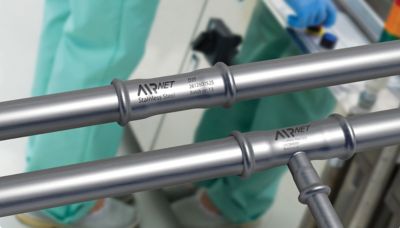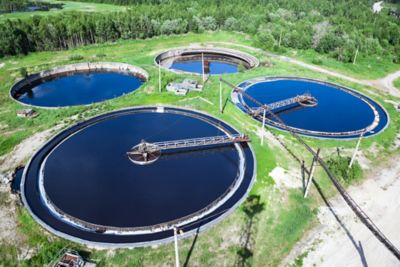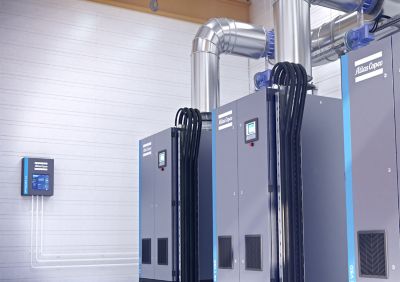Cooling water or
Cooling water or
condensate from the compressed air itself could potentially be a problem area. Regardless of the type of system you are running it is paramount to make sure your cooling system has been treated, much the same as your car to prevent the cooling water freezing in low temperatures. Make sure that any
Cooling water or
condensate from the compressed air itself could potentially be a problem area. Regardless of the type of system you are running it is paramount to make sure your cooling system has been treated, much the same as your car to prevent the cooling water freezing in low temperatures. Make sure that any
drains, piping system, etc. that are exposed (running outside of the building for example) are insulated, much as you would with your own water system at home. This can avoid not only split pipes but also prevent condensate from entering the air supply.
In extreme cases it could be beneficial to also add some trace heating (a heating element that runs along the outside of the pipework or drain). This is particularly true if you are using a
Cooling water or
condensate from the compressed air itself could potentially be a problem area. Regardless of the type of system you are running it is paramount to make sure your cooling system has been treated, much the same as your car to prevent the cooling water freezing in low temperatures. Make sure that any
drains, piping system, etc. that are exposed (running outside of the building for example) are insulated, much as you would with your own water system at home. This can avoid not only split pipes but also prevent condensate from entering the air supply.
In extreme cases it could be beneficial to also add some trace heating (a heating element that runs along the outside of the pipework or drain). This is particularly true if you are using a
refrigerated dryer where exposed pipe could drop to a lower temperature than the
Cooling water or
condensate from the compressed air itself could potentially be a problem area. Regardless of the type of system you are running it is paramount to make sure your cooling system has been treated, much the same as your car to prevent the cooling water freezing in low temperatures. Make sure that any
drains, piping system, etc. that are exposed (running outside of the building for example) are insulated, much as you would with your own water system at home. This can avoid not only split pipes but also prevent condensate from entering the air supply.
In extreme cases it could be beneficial to also add some trace heating (a heating element that runs along the outside of the pipework or drain). This is particularly true if you are using a
refrigerated dryer where exposed pipe could drop to a lower temperature than the
dew point on the dryer, resulting in condensate being present after the dryer. In wet weather, be sure to check air intake openings to ensure there is adequate protection from increased rain (or snow) blowing in from outside, as this could potentially saturate the air filter or form ice on the air intake.
Useful tip: If a compressor, dryer or
Cooling water or
condensate from the compressed air itself could potentially be a problem area. Regardless of the type of system you are running it is paramount to make sure your cooling system has been treated, much the same as your car to prevent the cooling water freezing in low temperatures. Make sure that any
drains, piping system, etc. that are exposed (running outside of the building for example) are insulated, much as you would with your own water system at home. This can avoid not only split pipes but also prevent condensate from entering the air supply.
In extreme cases it could be beneficial to also add some trace heating (a heating element that runs along the outside of the pipework or drain). This is particularly true if you are using a
refrigerated dryer where exposed pipe could drop to a lower temperature than the
dew point on the dryer, resulting in condensate being present after the dryer. In wet weather, be sure to check air intake openings to ensure there is adequate protection from increased rain (or snow) blowing in from outside, as this could potentially saturate the air filter or form ice on the air intake.
Useful tip: If a compressor, dryer or
oil-water separator is standing and not being used, it is wise to remove any free standing condensate or cooling water that is not treated, as this can lead to cracked pipes or coolers.



